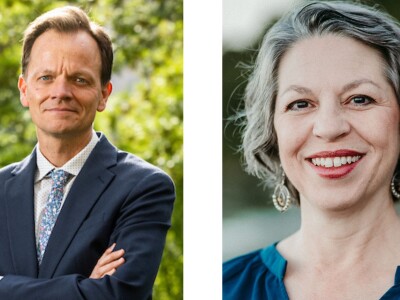Watching the recording of herself dancing, Pam Musil felt uneasy. Her technique wasn’t what it used to be. She thought to herself, “That’s what I look like dancing now? It feels so different from the inside.”
Musil hadn’t performed on stage for at least eight years when she agreed to take part in BYU dance professor Kate Monson’s documentary short, “And I continue — A conversation about dancing and aging,” which recently debuted at the National Dance Education Organization conference. And she didn't realize that Monson actually planned to film her dancing.
As she got older, Musil, BYU’s associate dance department chair, had gradually removed herself from the performative and technical aspects of dance. And though she felt self-conscious about dancing on film, she did it, she said, because “this story needs to be told.”
“Monson set up an environment where I could feel vulnerable and honest,” she said. “I felt like I could perform because the film needed to be able to project what the camera sees. Aging is a topic that isn't talked about enough in our discipline.”
Monson said it is commonplace for dancers to stop getting jobs or just bow out when they hit a certain age.
“Dance has expectations similar to athletics in that you hit a prime in your 20s and then you quietly and graciously disappear from the stage in your 30s, or if you’re lucky, your early 40s,” she said.
As such, Monson said, most dancers spend the bulk of their careers doing things other than performing. Many become dance professors, dance therapists, dance choreographers and dance instructors, but those roles are sometimes perceived as being less than performers, she added.
“We put professional performance on a pedestal and say those people are dancers and what the rest of us do in the dance world somehow isn’t being a dancer,” Monson said. “We save the word ‘dancer’ for professional dancers in professional dance companies.”
In her documentary Monson explores the shifting identity a dancer can feel when age and injury come into play. She said she originally wanted the project to be a dance film about aging female dancers with a little bit of documentary interview elements but received some pushback from the three subjects of the documentary.
“They all felt passionately about aging in dance but actually felt some reticence about physically dancing in front of the camera because they had taken themselves out of that role as dancers,” she said.
It was in those interviews that she decided to shift her focus from a dance film to a documentary with some featured dancing weaved in.
Monson said the project changed her perspective as a professor and choreographer, and made her want to seek ways to incorporate multigenerational dancers and refine dance conditioning to help her dancers avoid lifelong injury.
“We named the documentary ‘A conversation’ because this is just the tip of the iceberg. I’m not pretending to have any answers, but I would like to keep talking about ageism and find answers.”





